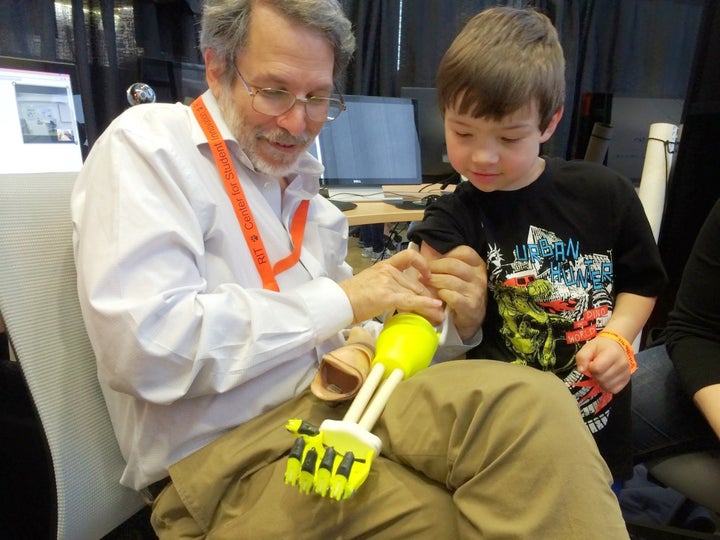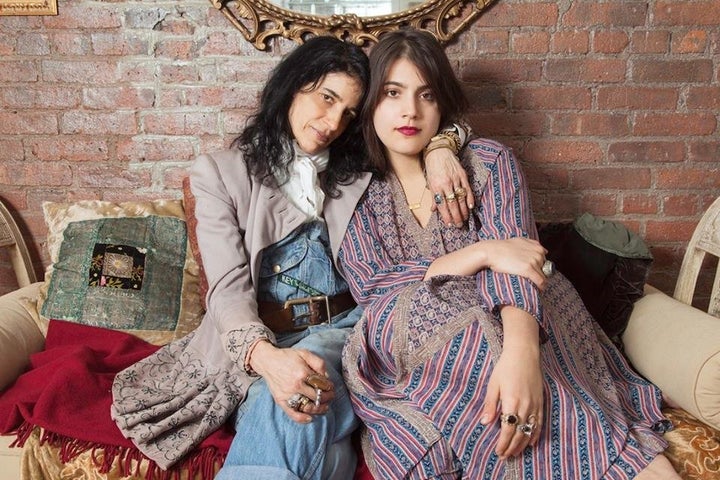Good ideas often travel at the speed of sound, from one person’s lips to another’s ears. But in our digital world, bold ideas and the movements they spark can germinate even faster, multiplying voices through bits and bytes and fostering common ground between a dizzying array of groups.
In partnership with Kia Sportage, we’re bringing you the everyday people who, driven by outsize passions, have created some of our generation’s most compelling movements. By using the tools of the Internet to connect across social, emotional and physical borders, they’ve helped millions tap into the most genuine version of themselves.
Caitlin Haacke Sticks It To Bullying With #PositivePostItDay

In September 2014, Caitlin Haacke, an 11th-grader at George McDougall High School in Alberta, Canada, was subjected to a horrible act of bullying. Someone broke into her locker, stole her iPad, and hacked her Facebook account to write a status update saying she “should die.”
Haacke quickly hatched a plan to respond -- but not retaliate. On October 6th, less than two weeks after the incident, the school’s 850 students walked into the building to find a shower of brightly colored affirmations stuck to their lockers by none other than Haacke, in a gesture inspired by high-schoolers in the U.S. From the straightforward (“you are cared about”) to the whimsical (“you are a sprinkle cupcake in a world full of muffins”), the Post-it messages of love hit home, says Haacke, whom we reached via Facebook. “Students were surprised to see the notes that morning, but also were happy,” she writes in a message. “Many came to me to say that the notes helped change their life.”
In an ironic twist, school officials initially punished Haacke for littering, as some of the notes fell off lockers and onto the floor. But the wider community backed the student’s actions wholeheartedly. “I knew that I wanted to make a positive change in my school halls, and it certainly worked!” Haacke recalls.
Thanks to social media, #PositivePostItDay has traveled the world. Schools all over are creating similar events, which Haacke documents on the campaign’s popular Facebook page. Now 18, she hopes to attend the University of Calgary for degrees in law and political science, en route to a larger dream of one day becoming prime minister. She and her family continue to perform random acts of kindness throughout their hometown.
“Change can come from anywhere, and it spreads like wildfire,” Haacke says. “It doesn't matter who you are, or where you come from: one piece of paper and an idea to be kind can make a true difference in the world.”
Marley Dias Sparks A 21st-Century Global Book Drive With #1000BlackGirlBooks

When Marley Dias, a bubbly African-American fifth-grader, started a campaign last fall to collect 1,000 books featuring black girls like her as the main character, her mother was proud but careful to manage expectations. Neither could have guessed that mere months later, the 11-year-old would beat that goal seven times over.
The self-proclaimed Buzzfeed aficionado, who dances through her thoughts with equal parts eloquence and excitement, had noticed that there were hardly any faces that looked like hers represented in the pages of her school-assigned reading. So she began searching for herself. “It was very frustrating [because] I knew it was out there,” says Marley, who spotlights Brown Girl Dreaming by Jacqueline Woodson as a personal favorite. She also points to a compelling generational effect that buoyed her cause. “It was interesting seeing a grandmother say, ‘I read books [like Where The Red Fern Grows],’ and then a mother say she read those books, too -- that’s how it blew up, because it was a problem everyone had faced,” Marley says.
According to Dr. Janice Johnson Dias, Marley’s mother -- whose nonprofit Marley credits with teaching her about her African heritage -- her daughter’s appearance on a local news station in January sparked the incredible momentum of #1000BlackGirlBooks.
“We don’t coach her -- when she was asked those questions, she spoke her truth,” Janice says. “The freedom she felt really resonated with people.” Soon after, Twitter and Instagram exploded with the #1000BlackGirlBooks hashtag as well-wishers sought to promote Marley’s cause, sending books from locations as far-flung as Uganda and Japan.
As of April, with help from donors like Barnes and Noble and a promotional appearance on “The Ellen DeGeneres Show,” she had amassed 7,000 books and donated 3,000. She and her mother are preparing to embark on six-city tour around the U.S. for what they’ll call “Black Girl Book Club,” with the aim of opening up the discourse on inclusive school reading lists.
Both Marley and her mother insist that social media was the key to the movement’s success. “Physically we can’t [always] connect, but online, we open a lot of doors,” Marley explains. “It allows you to show your best self, and in some cases it can kickstart your idea.”
Jon Schull Harnesses The Maker Movement With A Single YouTube Comment

Just a few years ago, Dr. Jon Schull could hardly have imagined where he’d be today: the founder of an 8,400-member Google Plus community dedicated to bringing affordable prosthetic limbs to everyone in the world who needs them. And to think -- it all started with one YouTube comment.
One morning in 2013, the then-professor of innovation at the Rochester Institute of Technology came across a compelling YouTube video. Commenters claimed to feel inspired by its subjects: a South African carpenter who lost his fingers in a shop accident, and a Washington-based puppet maker who devised a prosthesis for him. With 3-D printing becoming more and more accessible, they too had the means to make limbs, and they had the desire to help. If only they had the opportunity... and that’s when the lightbulb turned on for Schull. He whipped up a Google map and issued a simple challenge to the chain of commenters before leaving to teach his next class: Put your coordinates on the map if you want to get involved. “I saw an opportunity to conduct an experiment,” he explains. “It was really a whim when I did it … little did I know I was beginning my next career.”
As dozens of pins popped up on the map, Schull scrambled to erect the organizational scaffolding to support what turned out to be a nascent movement. Nearly four out of every 10,000 kids in the U.S. are born without a hand or arm, and prostheses can cost upward of $10,000 -- a wildly unaffordable proposition for many parents whose children would soon outgrow the devices. Yet with the power of the rapidly growing e-NABLE Google Plus group behind him, Schull went on to start a foundation that has been able to mobilize volunteers to 3-D print these limbs, which currently cost only $35 for materials.
The world has taken notice, but Schull, now 63, isn’t resting on his laurels. “We’ve only done a few thousand devices so far, and there are probably a few million people that could benefit,” Schull says from a Dubai hotel. (He’s in the midst of a whirlwind tour of the Middle East, raising e-NABLE awareness.) “Many more people could benefit from a global network of connected humanitarians.”
Lily Mandelbaum Redefines Beauty Through The What’s Underneath Project

Elisa Goodkind and Lily Mandelbaum have millions of YouTube views to validate their cause. Then again, its merits hardly need justification.
The mother-daughter team started a site called StyleLikeU in 2009 to take their passion for individual style to the next level. Goodkind was an in-demand fashion editor and stylist who grew disenchanted with the industry’s perceived shift away from “creativity and self-expression,” and toward “homogeneity,” Mandelbaum, 26, says of her mother.
Meanwhile, “I was feeling disempowered by what I saw in magazines because I’ve always been curvy,” she adds, noting that a certain thin, photoshopped ideal has long dominated those pages. With that in mind, the two simply picked up a video camera one day and started interviewing people in their lives whom they felt exemplified true style: feeling comfortable in their own skin.
By 2014, they had developed this into the confessional “What’s Underneath” project; in the videos, people of diverse backgrounds speak about their identity and style while removing articles of clothing. The result is a nakedly honest portrait of personhood that manages to be both affecting, vulnerable and relatable. They posted the videos to YouTube, and the rest, as they say, is viral history.
“We had no idea it would be such a big success,” Mandelbaum says. “We started getting comments and letters from fans telling us that [our videos] were really helping them get over eating disorders or come out as transgender. They wanted to know how to start this in their colleges and in their communities.”
The international outpouring of support inspired the duo to start a Kickstarter for a full-fledged documentary exploring what Mandelbaum sees as a self-image crisis in our culture. They’re hoping to take the message of What’s Underneath and StyleLikeU to every city in the world.
The work isn’t easy, but it’s been “transformational,” and the “most fulfilling thing in the world,” Mandelbaum says. And at the end of the day, she says there’s nothing like being her own boss. How’s that for empowerment?
Kia Sportage is dedicated to exploring what you’re most passionate about. Time to hit the road and impact your community, be it on or off-line.
